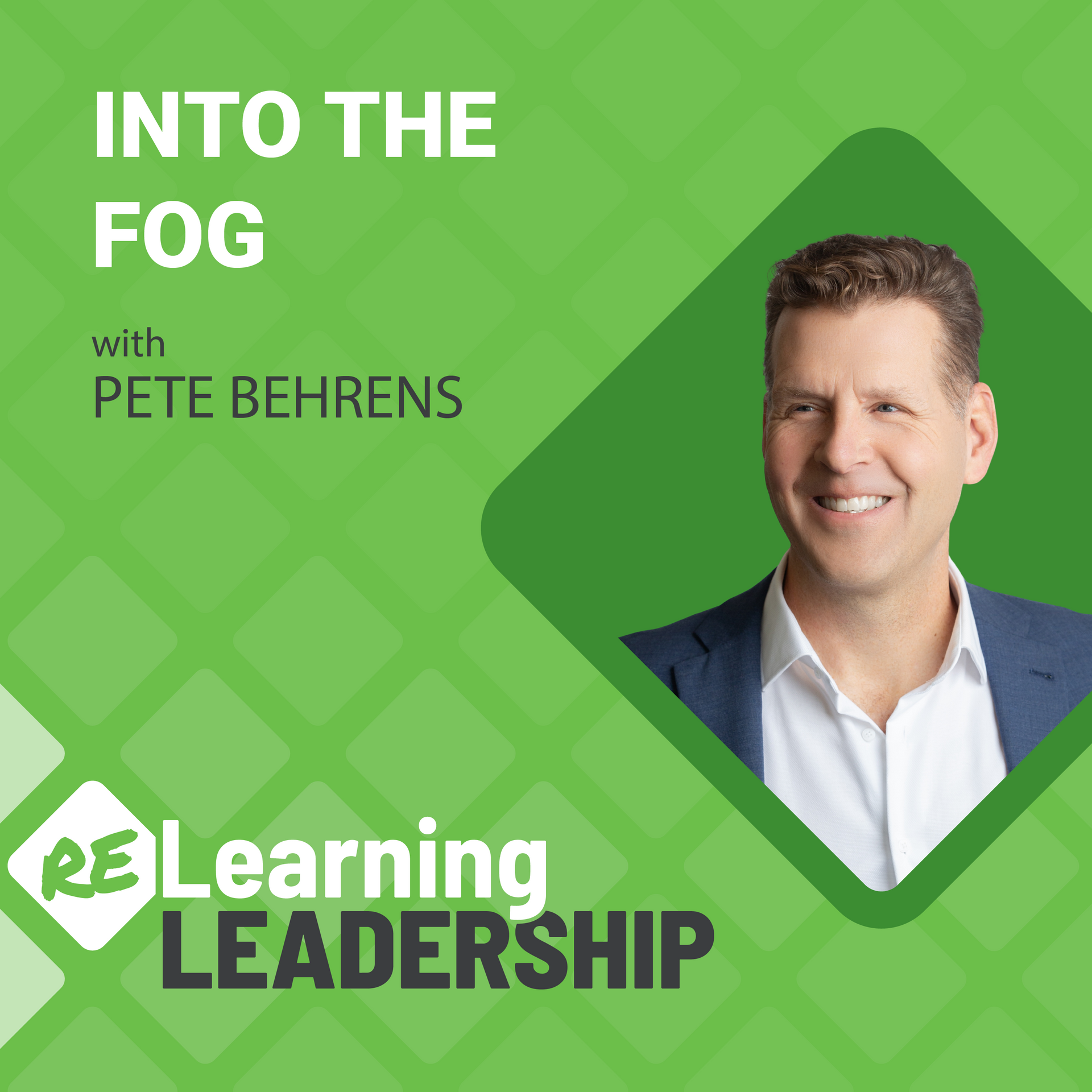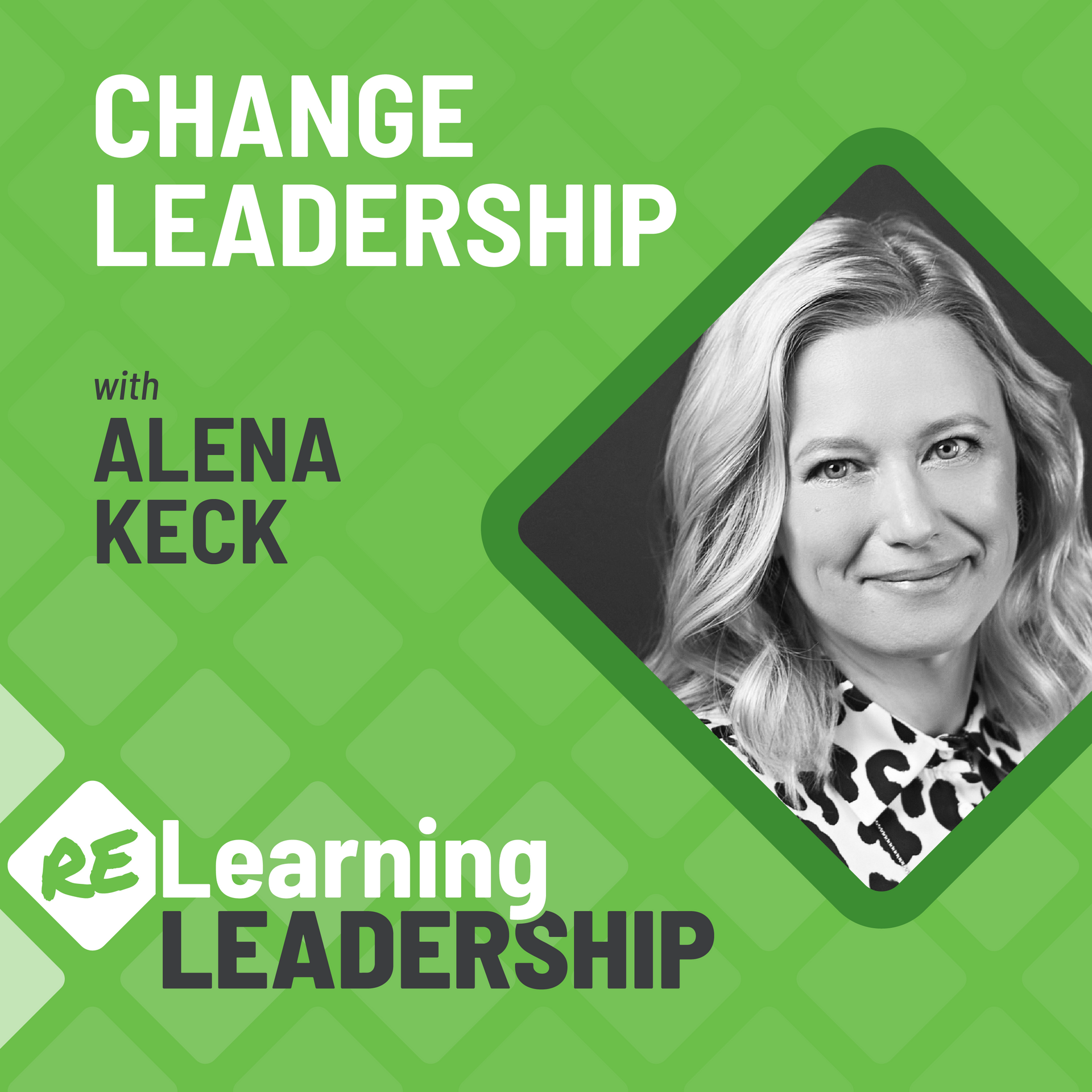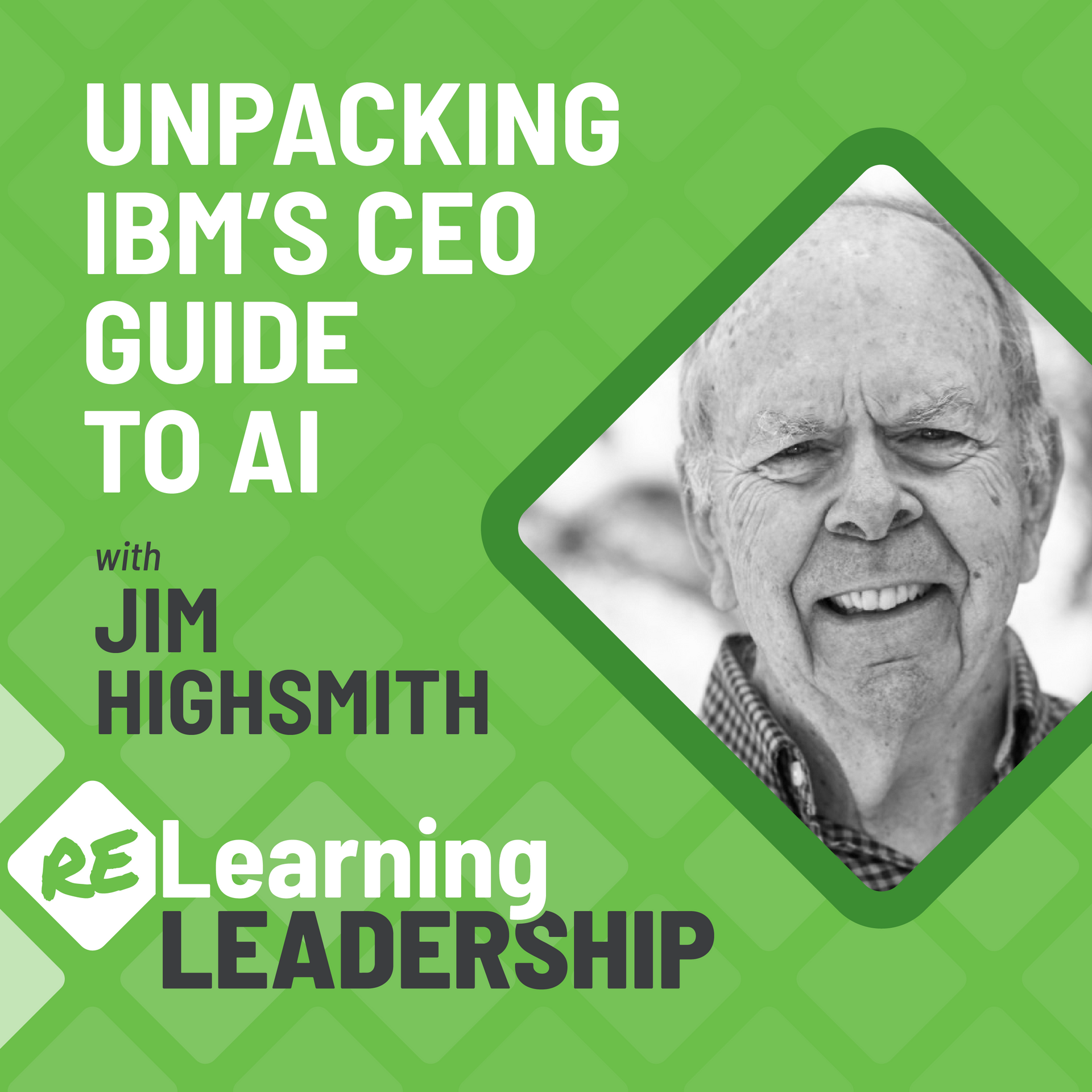32: Fake Agile: Causes and Cures
What is Fake Agile and why should you be looking for it?
Daniel Gagnon, Disciplined Agile Fellow and Agile Leadership Journey Guide, joins Pete to introduce the topic of Fake Agile and why leaders need to have it on their radar.
Daniel Gagnon, Disciplined Agile Fellow, Enterprise Agile Coach and Agile Leadership Journey Guide
Daniel Gagnon is an organizational agility advisor, coach, and trainer with close to three decades of diversified experience. One of two Disciplined Agile Fellows in the world, he describes himself as a passionate servant leader and ethical disruptor. Daniel focuses on helping leaders evolve their mindsets to foster the emergence of true organizational agility. To this end, he became an Agile Leadership Journey Guide in 2019 and co-developed an ICP-LEA certifying workshop with Bruno Collet, with whom he has partnered as a co-founder of Agile Leader Academy.
Connect with Daniel
Relearning from this episode…
Watch for Fake Agile Keywords - Words are signal flares that may mean fake agile has taken root in your organization. Agility, rooted in an empirical development process where decisions and direction emerge through learning, imply a different approach. So while agile labels may be used in your organization, Agile-In-Name-Only may only be a few words away. Words like “Deploy”, “Implement”, and “Rollout” are examples to watch out for.
Return to the Basic Rules of Agility -
Agility is built upon a few simple rules: four statements of value and 12 statements of principle, as described in the Agile Manifestor. However, over the past 20 years, an agile industrial complex has grown to complicate the landscape through its vast commentary (a good lesson/reference from Herman Melville, author of Moby Dick). Strip away the vast layers and look back at the root sources for inspiration to shed fake agile.
Shift Empowerment to Agency -
Daniel shares how the popularity of empowerment has grown and how easily it is wielded and removed at a leadership whim. He suggests moving past empowerment to agency. This is the difference between someone being allowed to speak the painful truth in a meeting and that same person actually doing it AND not being reprimanded or embarrassed by doing so.
Episode Transcript
Pete Behrens:
What is fake Agile, and why should you care? Welcome to another episode of
Relarning
Leadership,
where we explore a specific leadership challenge and break it down to help improve your leadership, your organization, and just possibly your personal life. I'm Pete Behrens, and today I'm joined by Daniel Gagnon, an Agile Leadership Journey Guide and Disciplined Agile Fellow. That's right: today we have the master. Welcome, Daniel!
Daniel Gagnon:
Ah, shucks! Hello, Pete. Hello, everyone. Pleased to be here.
Pete Behrens:
So humble, so humble, yeah. So today, Daniel, we're going to cover four quick little points around fake Agile. Number one: how to spot it, number two: what causes it, number three: what to do to prevent it. And then fourth: okay, if it's already infected in a project, what can we do? So to kick it off, maybe, how can we spot fake Agile in the corporate jungle, so to speak?
Daniel Gagnon:
Well, Pete, in my experience, there are three keywords that right away get me alarmed when I'm talking to executives, leadership, or even teams. And those three words are basically
deploy, implement,
or
rollout.
When I hear that, my Spidey Sense starts tingling! Because what I immediately, usually, find out in furthering that conversation is, yeah, we're going to rule out this Agile tool, and we're going to deploy this Agile framework. And I'm not going to get into—this is not a Frameworks-bashing session; I'm not going to go anywhere near there! What I'm saying is those three words are important in the context of using a framework or a tool. Because it means, basically, to me—I've started calling this when I hear this—rollout, deploy,
and
implement—to me, it is the great inversion of the Agile Manifesto. Those three words mean that we're looking at processes and tools over people and their interactions. We're looking at contract negotiation over customer collaboration. And we're looking at following a plan over adapting to change. We've actually inverted three of the four values. In fact, those three words, you know,
implement, deploying,
and
rollout,
are a flagrant contradiction to the very first sentence on the Agile Manifesto page. Now, the Agile Manifesto is a dated artifact, but it pointed us in a very good direction. So when it is that fundamentally aggressed in a corporate setting, my alarm bells go off. And I've actually walked away from more than one potentially lucrative contract because I couldn't get over those words. And when I poked, what was behind those words, in a word, was fake Agile.
Pete Behrens:
So the great hypocrisy, right? We take a traditional approach to so-called Install Agile as a process into our organization. I often think, okay, fake Agile is kind of that Agile-in-name-only, right? We apply concepts to things that aren't. Yeah, so it's interesting. I love those three words, and I think those are great trigger points for any leader out there listening.
Daniel Gagnon:
They’re alarms. They’re triggers. Yeah. And I'd like to—you said the word,
hypocrisy.
I have rarely seen it actually, you know, be with ill-intent or being hypocritical. It's just—leaders are doing what they know. People are trying to succeed with what, you know—the great book by Marshall Goldsmith, What Got You Here Won’t Get You There. Well, they're still trying to apply what got them there. What I'm saying is—it's not a question of apportioning or laying blame. It's more a question of getting to the human side, understanding and helping people realize that when they use words like that and they view it as processes and tools over people and their interactions, they're right off the bat on the wrong course.
Pete Behrens:
So if that's the case in terms of, okay, fake Agile—you know, I can spot it by seeing some of the hypocritical nature of Agile versus, maybe, what we're doing. What causes it? What's the source of it? What's generating some of that to occur?
Daniel Gagnon:
Fear, I think. Fear.
Pete Behrens:
Fear? Yeah, go on! Say more.
Daniel Gagnon:
Yeah. Fear of the untested. Fear of the unknown. And that fear stems from the fact that we still haven't—or the organization or the leader in question—has still not embraced an experimental mindset. So working with firms where, you know, basically the expectation is—if you're working on something, get it right the first time. You go to your boss, and your boss says,
“Don't bring me problems. Bring me solutions.” That's another classic. Instead of showing vulnerability and being open to being wrong. And what that fear really is about is—you know, there aren't enough people modeling the vulnerability, therefore. And taking an experimental approach that could fail is viewed as career-limiting. So, in that case what people do is—they look at the Agile Manifesto, they look at the literature, they watch YouTube, they read blogs, and so on and so on. They hire coaches, and they roll out frameworks because it is a way of wrapping the fear in, you know, Linus’s safety blanket. But underneath Linus’s safety blanket, the fear is still there. Linus from Peanuts, the comic strip!
Pete Behrens:
Yeah. Well, it's interesting. You say, you know, it's that fear of the unknown, it's the fear of the fog, it's fear of uncertainty. One of the things I think Agile does bring about is—it looks weak to say I don't have an answer, I don't have a date, I can't tell you when…I'm exploring something. And it's interesting how you're getting at kind of a root, emotional trigger. You got a language trigger; now you're getting into an emotional trigger. Like, there's something behind there that I'm afraid to expose.
Daniel Gagnon:
Yeah. And part of that—you know, I mentioned the Agile Manifesto earlier, as a historical artifact that is being sort of misrepresented. But I have a funny little tidbit to share with you. And I just put up a small post on LinkedIn about this. So, as I age—I've always been an avid reader, but now I feel the urge to read the classics more and more. So I just finished
Moby Dick,
okay? And something just, you know—I'm going to read this little quote to you and see if it rings a bell, in terms of what happened to the Agile Manifesto. So this is towards the end of the book. Melville is talking about the self-observed rules that the whaling industry had at the time. It was two simple rules. Rule number one: a fast fish belongs to the party fast to it. Meaning if you had a whale, you know, hooked to your boat, that was yours. Rule number two: a loose fish is fair game for anybody who can soon as catch it. If it became untethered, somebody else could claim it, for example, but the conditions around that were not set out by the rules. So here's the part that really struck me and blew my socks off. Right after that, he says, “But what plays the mischief with this masterly code is the admirable brevity of it, which necessitates a vast volume of commentaries to expound it.”
And that's what happens to the Agile Manifesto.
Pete Behrens:
Deep. That's deep! Throw us your interpretation of that. Analyze that briefly; bring it up one level.
Daniel Gagnon:
Just looking at Melville's wonderful language here—and there's a sarcasm in there, but also empathy. “What plays the mischief with this masterly code.” Right? So it is a masterly code. You look at this. You got two simple rules. Follow them. Common sense, right? Go on LinkedIn! Everybody's saying this:
“Agile’s common sense! We've been saying that for years.” Well, is it?
Pete Behrens:
It's like
inspect and adapt. Two rules!
Daniel Gagnon:
Two rules. Inspect and adapt. But what plays the mischief with the masterly code of
inspect and adapt is the admirable brevity of it. You know, the brevity is admirable. It's a joy to behold something so finally sculpted and structured and perfect. But what’s happened? How many books do we have? How many conferences do we have? We have the entire Agile industrial complex, which is seeking to create the commentaries, to expound it.
Pete Behrens:
Which, I think, kind of goes into that other side of fear. Fear to change the system, right? Because there was a current system in place that has all these rules. And it's a book, right? It's a code of conduct that's not just two simple rules. And any leader wanting to venture into that—that's a scary venture. That's like Herman Melville going out fishing.
Daniel Gagnon:
Then it requires critical thinking and the freedom and the space to do that in your organization.
Pete Behrens:
Okay, so we've got the spotting. We've got some of these language triggers. And we're starting to see the cause. And that cause is, kind of, both emotionally and internally, about dealing with change. But also that complexity of the rules of organizations and the simplicity Agile comes in with. And those just don't mix, right? The oil and water, to some degree. So let's transition now, maybe, into that—alright, can we prevent it? What can we do? What are the steps we can take to kind of keep it back or hold it down a little bit, slow it down.
Daniel Gagnon:
You know, I keep bumping into things like in Agile organizations where, basically, the Iron Triangle is everywhere in disguise. And as a PMP and a former practicing PM, I recognize the Iron Triangle when I see it. You know, it's very apparent. So again, we're wrapping Linus's safety blanket around the Iron Triangle. The other thing, too, that I've noticed—and I'll get to the solution. I think I have one word as a solution. The other thing I just wanted to point out in my experience, and surely yours and many Agile practitioners listening to this right now—the type of fake Agile we find is what I call the Agile galley. So the Agile galley is where teams are shackled to their oars and unceasing never-ending spirals of iterations where they have little-to-no say. And half the time, they haven't even been able to do something as simple as give their input on the [ ] and the iterations. The cadence of Agile is used as a drum beat of the slave ship. I'm not even kidding! I've seen it that bad.
Pete Behrens:
Getting back to that word,
commitment,
right?
“You are committed! You just do what it takes to meet this sprint goal!”
It’s the death march!
Daniel Gagnon:
And there’s no thank-you or celebration. It's just,
“Okay, here's the next step.” So we've taken the death march of Waterfall and just cut it into small death slices, small slices of death. [Laughs]
Pete Behrens:
Death by a thousand cuts, yes!
Daniel Gagnon:
So I think, to get to the real issue here, I think the solution boils down to a single, solitary word:
agency. Not empowerment.
Empowerment is something that can be blithely given and blithely taken away. Once you release agency into an organization, you've released it. And you can't put the toothpaste back into the tube. And, you know, we're seeing that with the pandemic and wars and everything, and—“Where did everybody go? Like, why can't these jobs be filled? Did the rapture happen? Like, it's only us evil people left?” You know, that's my theory now: the rapture has taken place. [Laughs] No, just kidding! Well, the simple thing is that the pandemic drained the lake, so we can see all the rusted shopping carts, tires, and other pollution at the bottom. And people are looking at this. They always felt it when they were swimming in it. They could sometimes, on a clear day, see the shopping cart. But now people are going,
“You know what? We have to redefine the social contract around work.”
Employee engagement, to my mind, was an oxymoron way before 2020. And I've spoken about this. There's no such thing. People need skin in the game. People need intrinsic motivation. You know, what Daniel Pink touched upon partly with Mastery, Autonomy, and Purpose. But I think he left behind—or agency is sort of implied, but you can't allow agency to be implied. It has to be there. That means giving people skin in the game. And, you know, there was no rapture. People just realized that, you know, throwing away their lives at jobs where they had absolutely no say, where they had to commute to—they gave society a reflective pause. And when, you know, the restrictions of COVID receded, they took the waters from that lake away. And people going, “No way am I diving into those rusty shopping carts again! And no amount of trinkets and bobbles thrown at people in the name of retention is going to work. That's a Band-Aid on a gaping wound.
Pete Behrens:
I love how you use that language:
agency.
And I think that is one of those words that's coming to the forefront. And I think COVID certainly, as you said, was a lake-draining event, that I think people started to recognize the agency they're missing. So I appreciate you bringing that back back forward for us. So, let's touch on the last piece. Okay, fake Agile is already there, right? It's infected our organization in some way. What are the next steps to start to—you know, what's the vaccine, or what's the treatment that we can apply, I guess, in this case?
Daniel Gagnon:
I think there are two major things. The first is: well, survey your employees in a non-threatening way and get the real feeling, no matter how you go about it. Get their real feeling and make an honest attempt at true empathy, where people have the safety to tell you how they feel. And if you are mired, if you are on an Agile galley, you will eventually know. And I'm only talking about employee surveys, I think, in order to gather data. Because an Agile galley—you can feel and smell it when you first set foot on the gangplank, believe me. And I'm sure you've seen that as well. So if it's obvious for everyone to see, smell, and hear, then we need the courage, the organizational courage. If you want to survive and thrive, then you have to unshackle people from their oars—is the first thing. The second thing, to my mind, is that—again, make it data-driven. Because that's the only non-fearful thing that you can use with leadership that is not yet convinced or is, you know, in that fear zone. Gather the data necessary to demonstrate that we're not actually—you know, I love the title of Jonathan Smart's book,
Better, Sooner, Safer, Happier.
Right? We're not actually that much better. It's not actually that much sooner. It's certainly not safer because everyone's silent. And it's far from happier. Look at the turnover. Data, data data, I think, is the only way. I talk a lot about things like the touchy-feely human side. But if leadership is ensconced in old ways, then you have to meet them where they are. And that's with data.
Pete Behrens:
You know, agency itself is the—I like the way you said that that's the answer. It's like, you've got to allow employees to help dig the organization itself out, right? Give them some shovels, give them some agency on the process, give them some agency on the structures, give them some agency on the metrics. Don't just give them agency on the things that they're working on. Let them design their system or co-design their system. That’s agency, too. And I think there's so much empowerment and ownership that comes when I can be responsible for my own system of rules and policies. Yeah, yeah. Well, Daniel, I want to say thank you. You know, one of the things I'm feeling with fake Agile right now is the sense that it's not something that usually happens overnight, right? This is something that likely just builds and builds.
Daniel Gagnon:
It starts from deployment and then gets worse.
Pete Behrens:
Yeah. And so the solution is probably not also going to happen overnight, right? This is going to take repeated—it's like fitness or health, right? It's going to take ongoing investment, month after month, quarter after quarter, year after year, to really start to rid some of these different aspects out. Is that fair to say?
Daniel Gagnon:
Absolutely. It's just like—you know, to use a sort of, you know, very depressing metaphor, it's not because you've opened the cage that people are going to come out immediately, right? They’re looking at each other.
“Is that really open? If I go out, are they going to lock it behind me? I'll be the only one out there.”
Pete Behrens:
Depressing metaphors! That's a great way to end this podcast. Open the door to the cage, and see what the employees do. Everybody's afraid to walk out! I love it.
Daniel Gagnon:
Everybody's afraid to walk out. Do they feel safe to even walk out?
Pete Behrens:
Well anybody listening out there, watching out there, I encourage you to critically evaluate, look at your organization as Daniel said, do some data points, gather some data, you know, and start to think about and get them involved in whatever those next steps are to help start to stomp this out. So, just want to say thank you for listening and joining us today, and enjoy the journey!
Daniel Gagnon:
Thanks for having me, Pete, And folks, yes, enjoy the journey!
Pete Behrens:
Relearning Leadership is the official podcast of the Agile Leadership Journey, together we build better leaders. It’s hosted by me, Pete Behrens, with contributions from our global Guide community. It’s produced by Ryan Dugan. With music by Joy Zimmerman. If you enjoyed this episode, please subscribe, leave us a review, or share a comment. And visit our website,
agileleadershipjourney.com/podcast, for guest profiles, episode references, transcripts, and to explore more about your own leadership journey.
Explore:
Recent Episodes










